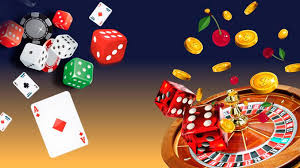Exploring the Popularity of Poker
Poker, once a clandestine game played in smoky back rooms, has surged into mainstream popularity over the past few decades. Various factors contribute to this rise, intertwining social, cultural, and technological trends to create a unique environment for the game. Today, poker is more than just a gambling pastime; it has evolved into a fascinating cultural phenomenon and a lucrative industry. To understand its popularity, we must explore its evolution, the impact of technology, and the elements that attract players from all walks of life. For an in-depth examination, check out Exploring the Popularity of Poker Tournaments in Bangladesh https://attentionchantier.org/.
The Evolution of Poker
The origins of poker date back to the early 19th century, with various theories regarding its inception. Some historians trace it back to the 16th century Persian game As-Nas, while others suggest the French game Poque as a precursor. Over time, poker was brought to the United States by immigrants, where it underwent numerous alterations. The game’s transformation from a simple card game to the strategic and psychological duel we see today took place in private homes and riverboats along the Mississippi.
The rise of poker’s popularity in the latter half of the 20th century can be largely attributed to televised tournaments. The World Series of Poker (WSOP) was established in 1970, and its broadcasts introduced millions of viewers to the dynamics and intricacies of the game. By showcasing professional players and their strategies, poker transitioned from a backroom activity to a global spectacle. The late 90s and early 2000s witnessed a poker boom, largely thanks to the Internet and the introduction of online poker rooms. Websites like PokerStars and Full Tilt Poker provided platforms for players to compete against each other from the comfort of their own homes.
The Role of Technology
Technology is pivotal in poker’s popularization, catalyzing accessibility and engagement. The rise of online poker has made the game widely available. Players can join a game with just a click, whether they are sitting at home in their pajamas or on their smartphones during their daily commute. Online platforms have also democratized the game, allowing novices and amateurs to compete with seasoned professionals without facing the intimidating atmosphere of traditional casinos.
Mobile applications have fostered a new generation of players. These apps provide easy access to poker games and tutorials, catering to those new to the game. Social media platforms have turned poker into a spectator sport, with aspiring players watching live streams on platforms like Twitch. This element of community-building contributes significantly to poker’s ongoing popularity. Young players find inspiration in the strategies of their favorite professional players, bridging the gap between novice and expert.
Cultural Impact and Media Representation
Poker’s representation in popular culture has also contributed to its allure. Films like “Rounders” and “Casino Royale,” along with television series like “High Stakes Poker,” have romanticized the game, portraying it as a battleground for wits and intelligence rather than just a form of gambling. Alongside these visual mediums, the rise of poker-themed merchandise, books, and even poker-related jargon in everyday language showcases how the game has integrated itself into popular culture.
Another essential aspect is the game’s portrayal on television. Shows like “Poker After Dark” and the annual coverage of the WSOP have introduced television audiences to the emotional highs and lows of competitive poker. Viewers are captivated not only by the gameplay but also by the personalities involved. The drama, tension, and excitement have made poker an attractive choice for broadcast networks, further entrenching it within the cultural fabric.
Poker as a Social Activity

At its core, poker is a social game. The camaraderie built around a table is a crucial aspect that keeps players coming back. Whether it’s playing with friends, family gatherings, or participating in community tournaments, the interpersonal dynamics involved in poker offer a unique social experience. Poker clubs and local leagues have sprung up worldwide, creating communities centered around friendly competition. Such gatherings emphasize fun and interaction, making poker more than just a game of chance; it becomes a bonding experience.
The Psychological Appeal
Poker uniquely combines luck, skill, and psychological strategy, attracting individuals who enjoy the challenge of outsmarting their opponents. The intellectual aspect of the game, including reading opponents, calculating odds, and employing bluffing tactics, creates a dynamic environment that excites many. This complex interplay of skills requires focus, discipline, and emotional control, making it rewarding for those who excel.
Future Trends
As poker continues to evolve, several trends are shaping its future. The integration of artificial intelligence in poker training offers players new tools to enhance their skills, while virtual reality technologies may redefine how the game is played. Online and live tournaments are becoming more accessible, drawing in a diverse audience. As regulatory frameworks around online poker also continue to develop, more players may find legitimate avenues to engage with the game safely.
Conclusion
Ultimately, the popularity of poker is the result of a convergence of historical evolution, technological advancement, cultural representation, and social interaction. As the game keeps evolving with the times, its core appeal remains the same: a captivating blend of strategic thinking, luck, and social engagement. Poker isn’t merely a card game; it’s a multifaceted phenomenon that continues to fascinate and attract, ensuring its place in both the gaming world and popular culture for years to come.
